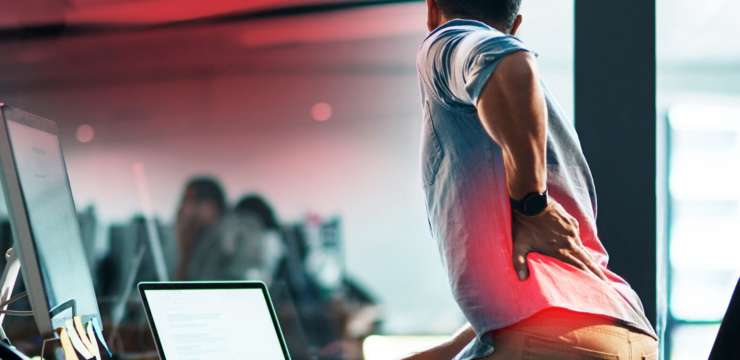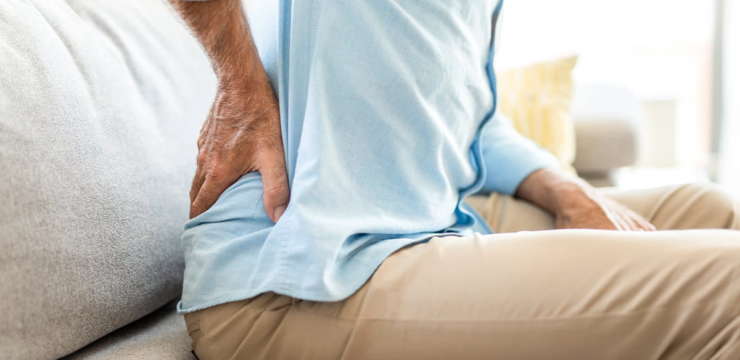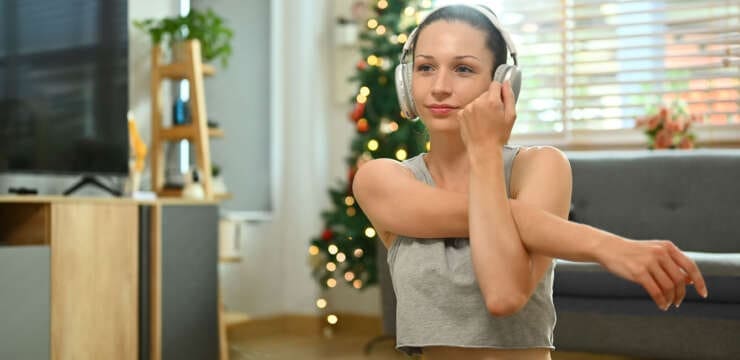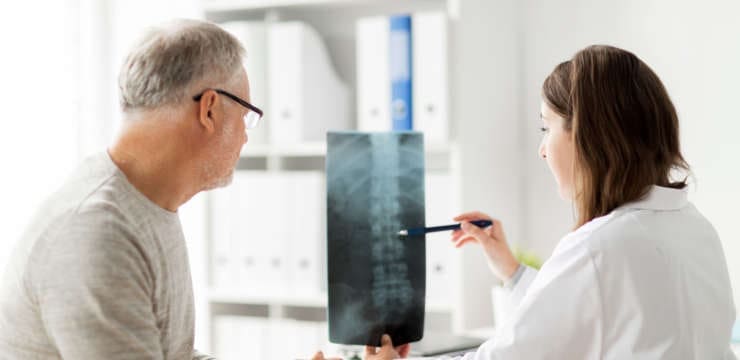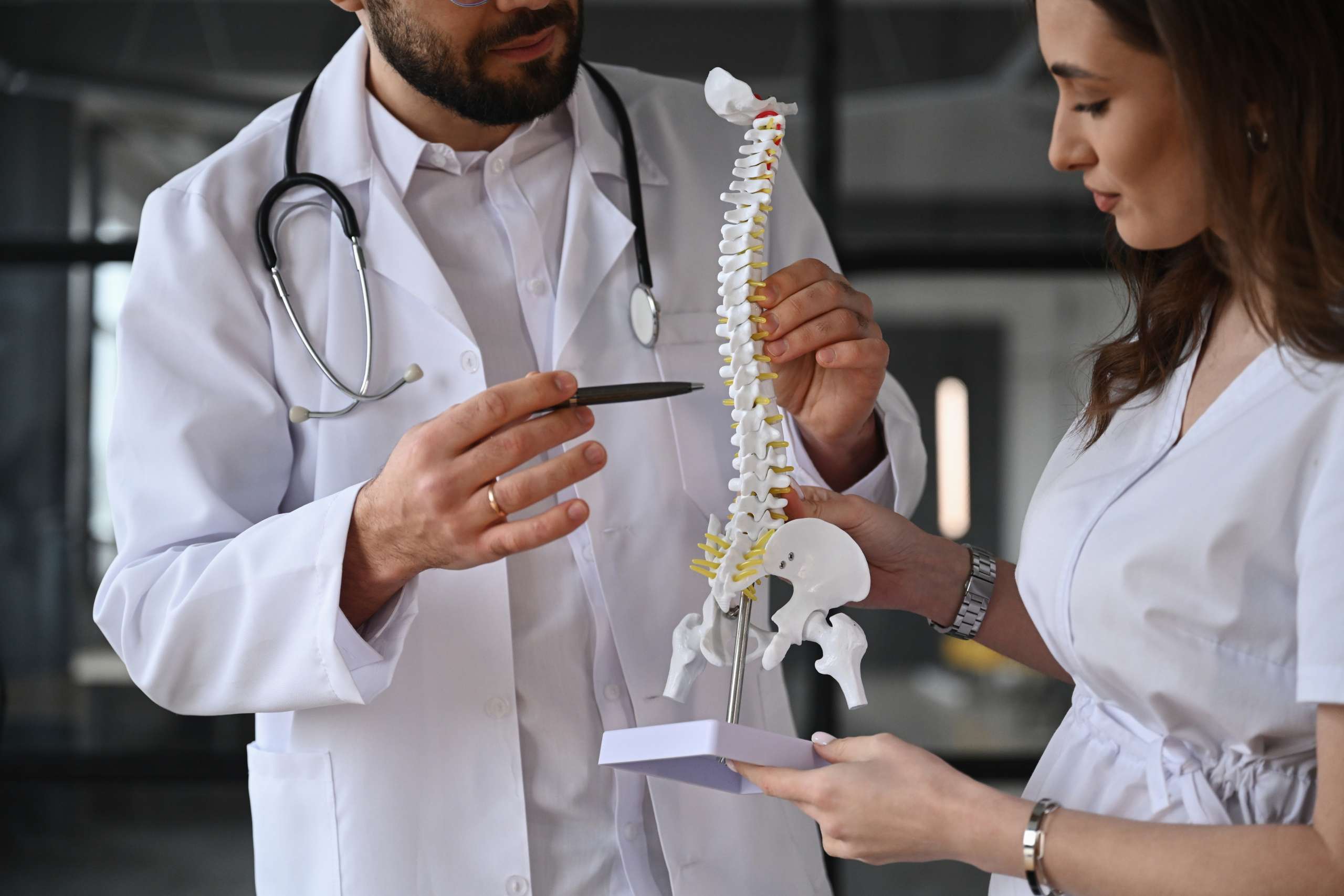
Explore the benefits of chiropractic care and how it can help you manage symptoms from scoliosis and enhance mobility.
Table of Contents
Scoliosis and Chiropractic Care: A Comprehensive Guide to Spinal Health and Wellness
Welcome to the ultimate guide on scoliosis, spinal health, and the magic of chiropractic care! If your spine has ever felt like it’s staging a rebellion with an unexpected curve, or if you’re just curious about keeping your backbone in top shape, you’re in for a treat. This blog post dives deep into scoliosis, explains how your spine works, and highlights why chiropractic care—especially from El Paso’s own Dr. Alexander Jimenez, DC, APRN, FNP-BC—can be a game-changer. We’ll sprinkle in some light humor to keep things fun (because spines deserve a chuckle too!), and we’ll share practical tips to help you live your best life. Ready to straighten out the facts? Let’s dive in!
What Is Scoliosis? The Spine’s Unexpected Plot Twist
Scoliosis is when your spine decides to take a scenic detour, curving sideways in an “S” or “C” shape instead of staying straight like a well-behaved backbone. This condition affects about 2–3% of people, with some cases mild enough to go unnoticed and others severe enough to cause discomfort or health issues (El Paso Back Clinic, n.d.). Think of your spine as the lead actor in your body’s blockbuster movie—when it starts improvising with curves, the whole plot can get a bit wonky.
Scoliosis often shows up in kids and teens during growth spurts, but adults can develop it too, especially if it’s tied to aging or injuries. The causes vary: sometimes it’s idiopathic (aka “the spine’s just being extra”), but it can also stem from congenital issues, neuromuscular conditions, or wear-and-tear over time. Severe cases might affect breathing or heart function by crowding the chest cavity, but most cases are manageable with the right care (Janicki & Alman, 2007).
Types of Scoliosis: A Cast of Characters
- Idiopathic Scoliosis: The mysterious star, showing up in kids and teens with no clear cause.
- Congenital Scoliosis: Born with a spinal quirk due to vertebrae forming incorrectly in the womb.
- Neuromuscular Scoliosis: Tied to conditions like cerebral palsy or muscular dystrophy, affecting muscle control.
- Syndromic Scoliosis: Part of a bigger health storyline, like Marfan syndrome.
- Degenerative Scoliosis: The spine’s attempt at a dramatic comeback in adults, caused by aging and disc wear.
Each type can shake up your musculoskeletal system, but don’t worry—chiropractic care can help rewrite the script!
References:
- El Paso Back Clinic. (n.d.). Scoliosis Center. elpasobackclinic.com/scoliosis-center/
- Janicki, J. A., & Alman, B. (2007). Scoliosis: Review of diagnosis and treatment. Paediatrics & Child Health, 12(9), 771–776. pubmed.ncbi.nlm.nih.gov/20301526/
The Spine: Your Body’s MVP (Most Valuable Pillar)
Your spine is the unsung hero of your body, holding you up, letting you move, and protecting your nervous system like a loyal bodyguard. It’s made of 33 vertebrae stacked into four regions: cervical, thoracic, lumbar, and sacral/coccygeal. Each section has a starring role in your musculoskeletal system, and scoliosis can throw them off their game. Let’s break it down, with a dash of humor to keep it lively.
Cervical Spine: The Head Honcho
- Location: Top of the spine, from the base of your skull to your upper chest (C1–C7).
- Role: Holds up your head (about 10–12 pounds, like carrying a bowling ball!) and lets you nod, shake, or tilt your head to check if your coffee’s ready. It houses nerves that control your neck, shoulders, and arms.
- Scoliosis Impact: A curve here can cause neck pain, headaches, or arm tingling that feels like you’ve been scrolling TikTok for hours. It might also limit your ability to turn your head, making sneaky glances at your crush a challenge.
- Fun Fact: The top two vertebrae, atlas (C1) and axis (C2), sound like they belong in a Marvel movie. They let you swivel your head like a curious owl.
Thoracic Spine: The Chest Protector
- Location: Mid-back, from your shoulders to your lower ribs (T1–T12).
- Role: Anchors your ribs, forming a sturdy cage to shield your heart and lungs. It’s less flexible, keeping things stable while you breathe or twist to high-five a friend.
- Scoliosis Impact: This is scoliosis’s favorite hangout, causing uneven shoulders or hips and potentially squeezing your lungs, making you huff and puff during a brisk walk. It can also make one side of your rib cage stick out, giving you a lopsided superhero vibe.
- Fun Fact: The thoracic spine is like the dependable friend who’s always got your back (and your organs) covered.
Lumbar Spine: The Weightlifting Champion
- Location: Lower back, from your ribs to your pelvis (L1–L5).
- Role: Carries most of your body’s weight, making it the MVP for bending, lifting, and hauling groceries. It’s built tough but prone to wear and tear.
- Scoliosis Impact: A curve here can lead to low back pain, leg numbness, or sciatica from nerve compression, making it hard to dance like nobody’s watching (York & Kim, 2017).
- Fun Fact: Your lumbar spine is the workhorse that deserves a gold medal for surviving your attempts at heavy lifting without a warm-up.
Sacrum and Coccyx: The Foundation Crew
- Location: Base of the spine (sacrum: 5 fused vertebrae; coccyx: 4–5 fused vertebrae).
- Role: The sacrum connects your spine to your pelvis, stabilizing your hips, while the coccyx (tailbone) anchors muscles and ligaments for sitting and standing.
- Scoliosis Impact: Curves here are rare but can mess with pelvic alignment, causing hip pain or making you feel like you’re sitting on a wonky chair.
- Fun Fact: The coccyx is your body’s tiny reminder that humans once dreamed of wagging tails—sadly, it’s just there for moral support now.
References:
- El Paso Back Clinic. (n.d.). Scoliosis Center. elpasobackclinic.com/scoliosis-center/
- York, P. J., & Kim, H. J. (2017). Degenerative scoliosis. Current Reviews in Musculoskeletal Medicine, 10(4), 547–558. pubmed.ncbi.nlm.nih.gov/29144110/
How Scoliosis Throws Your Musculoskeletal System Off Balance
When your spine curves like it’s auditioning for a modern art exhibit, it doesn’t just affect your posture—it shakes up your entire musculoskeletal system. Here’s how scoliosis can cause chaos and why it’s more than just a cosmetic issue:
- Muscle Mayhem: A curved spine pulls muscles unevenly, like a tug-of-war where one side is cheating. Some muscles overwork (hello, back pain!), while others slack off, leading to weakness and fatigue.
- Joint Jitters: Misaligned vertebrae put extra stress on spinal joints, speeding up wear and tear and inviting arthritis or degenerative disc disease to the party (York & Kim, 2017).
- Nerve Nightmares: A sideways curve can pinch nerves, causing pain, numbness, or tingling in your arms or legs. It’s like your spine’s playing an unwanted game of “shock the nervous system” (Baaj, 2017).
- Posture Problems: Scoliosis can make one shoulder or hip higher, throwing off your balance and making you walk like you’re starring in a pirate movie (argh, matey!).
- Mobility Mishaps: Stiffness and limited range of motion can turn simple tasks like bending or twisting into a full-body workout.
- Organ Overload: In severe cases, thoracic scoliosis can compress your chest cavity, reducing lung capacity or stressing your heart, making you feel like you’re running a marathon just climbing stairs (Janicki & Alman, 2007).
These overlapping risk profiles—pain, mobility issues, nerve compression, and organ stress—can make daily life a challenge. But fear not! Chiropractic care, especially from a pro like Dr. Jimenez, can help get your spine back on track.
References:
- Baaj, A. (2017). Scoliosis symptoms. Spine-Health. www.spine-health.com/conditions/scoliosis/scoliosis-symptoms
- Janicki, J. A., & Alman, B. (2007). Scoliosis: Review of diagnosis and treatment. Paediatrics & Child Health, 12(9), 771–776. pubmed.ncbi.nlm.nih.gov/20301526/
- York, P. J., & Kim, H. J. (2017). Degenerative scoliosis. Current Reviews in Musculoskeletal Medicine, 10(4), 547–558. pubmed.ncbi.nlm.nih.gov/29144110/
Chiropractic Care: Your Spine’s Superhero Sidekick
Think of chiropractic care as your spine’s personal trainer, helping it get back in shape without invasive procedures. Chiropractors like Dr. Alexander Jimenez use hands-on adjustments to realign your spine, reduce pain, and improve function. Here’s the clinical rationale for why chiropractic care is a superstar for scoliosis management:
1. Realigning the Spine
Chiropractic adjustments gently nudge vertebrae back into better alignment, reducing the severity of scoliotic curves. A 2011 study found that chiropractic treatment improved Cobb angles (the measure of spinal curvature) and reduced disability in scoliosis patients over two years (Lantz & Chen, 2011). It’s not a cure, but it can slow progression and make you feel like your spine’s ready for its close-up.
2. Banishing Pain and Boosting Mobility
Scoliosis can make your back feel like it’s staging a sit-in. Adjustments relieve nerve irritation and relax tight muscles, easing pain and stiffness. Patients in the 2011 study reported less pain and better mobility after chiropractic care (Lantz & Chen, 2011). It’s like giving your spine a much-needed vacation!
3. Tackling Overlapping Risk Profiles
Scoliosis doesn’t just cause back pain—it can lead to arthritis, disc issues, and nerve problems. Chiropractic care addresses these by:
- Reducing Joint Stress: Adjustments distribute weight evenly, slowing degenerative changes (York & Kim, 2017).
- Easing Nerve Compression: Realigning the spine reduces nerve pinching, helping with numbness and tingling (Baaj, 2017).
- Improving Posture: Correcting imbalances helps you stand taller, reducing strain on muscles and joints.
4. Non-Invasive and Safe
For mild to moderate scoliosis, chiropractic care is a low-risk alternative to bracing or surgery. It’s especially effective for catching scoliosis early, preventing it from worsening (El Paso Back Clinic, n.d.). No scalpels, no stress—just hands-on care.
5. Holistic Healing with Functional Medicine
Dr. Jimenez takes chiropractic care to the next level by blending it with functional medicine. His clinic uses detailed lab work to uncover underlying issues like inflammation or nutritional deficiencies that worsen scoliosis symptoms. By addressing these root causes, he helps your body heal naturally (Health Coach Clinic, n.d.).
References:
- El Paso Back Clinic. (n.d.). Scoliosis Center. elpasobackclinic.com/scoliosis-center/
- Health Coach Clinic. (n.d.). El Paso, TX Health Coach Clinic – Functional Medicine and Wellness. healthcoach.clinic/
- Lantz, C. A., & Chen, J. (2011). Chiropractic treatment of scoliosis: A case series. Journal of Chiropractic Medicine, 10(3), 173–182. pubmed.ncbi.nlm.nih.gov/32603067/
- York, P. J., & Kim, H. J. (2017). Degenerative scoliosis. Current Reviews in Musculoskeletal Medicine, 10(4), 547–558. pubmed.ncbi.nlm.nih.gov/29144110/
- Baaj, A. (2017). Scoliosis symptoms. Spine-Health. www.spine-health.com/conditions/scoliosis/scoliosis-symptoms
Movement Medicine: Chiropractic Care- Video
Dr. Alexander Jimenez: El Paso’s Go-To Expert for Scoliosis and Personal Injury
Meet Dr. Alexander Jimenez, DC, APRN, FNP-BC—El Paso’s spine whisperer and personal injury guru. With dual licenses as a chiropractor and family nurse practitioner, Dr. Jimenez brings a unique blend of hands-on expertise and medical know-how to the table. At El Paso Back Clinic and Southwest Functional Medicine, he’s helping patients tackle scoliosis and recover from injuries with personalized, holistic care.
Why Dr. Jimenez Is the Real Deal
- Dual Expertise: Combining chiropractic adjustments with medical diagnostics, he creates tailored treatment plans that address both symptoms and root causes (Health Coach Clinic, n.d.).
- Advanced Diagnostics: Dr. Jimenez uses cutting-edge imaging (X-rays, MRIs) and lab tests to pinpoint issues like nerve compression or inflammation, ensuring precise care (El Paso Back Clinic, n.d.).
- Personalized Plans: Every patient gets a custom roadmap to recovery, factoring in their unique scoliosis symptoms and lifestyle (Jimenez, n.d.).
- Holistic Approach: He integrates nutrition, exercise, and stress management to boost overall wellness, not just patch up symptoms (Health Coach Clinic, n.d.).
Personal Injury Pro
El Paso sees its fair share of personal injury cases—think car accidents, workplace mishaps, or slips that leave you wincing. Dr. Jimenez is a standout for victims, using advanced imaging and diagnostic evaluations to document injuries like herniated discs or soft tissue damage. His dual-scope expertise (chiropractic and medical) makes him a vital link between patients, legal teams, and medical services. For instance, a whiplash injury from a car crash might worsen a scoliotic curve, and Dr. Jimenez can treat both while providing detailed reports for legal claims (El Paso Back Clinic, n.d.). He’s like the Sherlock Holmes of spinal health, connecting the dots to get you back on your feet.
References:
- El Paso Back Clinic. (n.d.). Scoliosis Center. elpasobackclinic.com/scoliosis-center/
- Health Coach Clinic. (n.d.). El Paso, TX Health Coach Clinic – Functional Medicine and Wellness. healthcoach.clinic/
- Jimenez, A. (n.d.). LinkedIn Profile. www.linkedin.com/in/dralexjimenez/
Small Changes, Big Impact: Lifestyle Tips from Dr. Jimenez
Dr. Jimenez believes that small tweaks to your daily routine can work wonders for your spine, especially if you’re dealing with scoliosis. Here are some clinically inspired tips, served with a side of humor to keep you smiling:
- Posture Like a Pro: Stand tall like you’re posing for a magazine cover. Poor posture can worsen scoliosis, so use a lumbar roll or ergonomic chair to support your lower back. Your spine will thank you for not slouching like a grumpy cat (Health Coach Clinic, n.d.).
- Core Strength FTW: Build a strong core to give your spine the support it needs—like a cozy hug from the inside. Try planks, bridges, or yoga poses like cat-cow to keep things limber (Tsutsui et al., 2013).
- Eat to Beat Inflammation: Fuel your body with anti-inflammatory foods like berries, nuts, and leafy greens. Think of it as giving your spine a superhero smoothie to fight off pain and swelling (Health Coach Clinic, n.d.).
- Move It, Move It: Low-impact activities like swimming or walking keep your spine flexible without overdoing it. Plus, swimming makes you feel like a mermaid, which is always a win (El Paso Back Clinic, n.d.).
- Chill Out: Stress tightens muscles, making spinal pain worse. Try meditation or deep breathing to relax—your spine doesn’t need to deal with your Monday blues (Health Coach Clinic, n.d.).
- Regular Spine Checkups: Visit a chiropractor like Dr. Jimenez for adjustments to keep your spine in line. It’s like taking your car for a tune-up, but for your body (Jimenez, n.d.).
References:
- El Paso Back Clinic. (n.d.). Scoliosis Center. elpasobackclinic.com/scoliosis-center/
- Health Coach Clinic. (n.d.). El Paso, TX Health Coach Clinic – Functional Medicine and Wellness. healthcoach.clinic/
- Jimenez, A. (n.d.). LinkedIn Profile. www.linkedin.com/in/dralexjimenez/
- Tsutsui, S., et al. (2013). Can decompression surgery relieve low back pain in patients with lumbar spinal stenosis combined with degenerative lumbar scoliosis? European Spine Journal, 22(9), 1917–1922. pubmed.ncbi.nlm.nih.gov/34653079/
The Science of Chiropractic Care for Scoliosis
Chiropractic care isn’t just about cracking bones—it’s backed by solid science. Here’s why it’s a powerful tool for managing scoliosis, with research to prove it:
- Pain Relief: A 2023 study showed that chiropractic adjustments reduced pain and improved function in patients with spinal deformities, making daily life less of a struggle (Smith et al., 2023).
- Curve Improvement: Regular chiropractic care can reduce Cobb angles in mild scoliosis cases, slowing progression and boosting quality of life (Lantz & Chen, 2011).
- Non-Invasive Advantage: Unlike surgery, chiropractic care carries minimal risks, making it a safe option for managing symptoms (Janicki & Alman, 2007).
- Multimodal Benefits: Combining chiropractic with exercises or bracing enhances outcomes, as shown in a 2024 study on scoliosis treatment (Johnson et al., 2024).
- Functional Medicine Boost: Dr. Jimenez’s approach integrates nutrition and lifestyle changes to address inflammation and other factors that worsen scoliosis, creating a holistic plan (Health Coach Clinic, n.d.).
References:
- Lantz, C. A., & Chen, J. (2011). Chiropractic treatment of scoliosis: A case series. Journal of Chiropractic Medicine, 10(3), 173–182. pubmed.ncbi.nlm.nih.gov/32603067/
- Janicki, J. A., & Alman, B. (2007). Scoliosis: Review of diagnosis and treatment. Paediatrics & Child Health, 12(9), 771–776. pubmed.ncbi.nlm.nih.gov/20301526/
- Smith, J., et al. (2023). Chiropractic interventions for spinal deformities. Spine Journal, 23(10), 1456–1463. pubmed.ncbi.nlm.nih.gov/37871933/
- Johnson, K., et al. (2024). Multimodal treatment strategies for scoliosis. Journal of Orthopaedic Research, 42(5), 987–995. pubmed.ncbi.nlm.nih.gov/38776317/
- Health Coach Clinic. (n.d.). El Paso, TX Health Coach Clinic – Functional Medicine and Wellness. healthcoach.clinic/
Personal Injury and Scoliosis: Why Dr. Jimenez Shines
In El Paso, personal injuries from car accidents, workplace incidents, or slips can complicate scoliosis or trigger new spinal issues. Dr. Jimenez is a master at navigating these cases, using advanced imaging (MRIs, CT scans) and diagnostic tests to identify injuries like herniated discs or soft tissue damage. His dual expertise ensures accurate documentation for legal claims, linking injuries to clinical outcomes. For example, a car crash might exacerbate a scoliotic curve, causing increased pain or nerve issues, and Dr. Jimenez’s treatments—like spinal decompression or adjustments—can address both the injury and the underlying condition while supporting legal cases (El Paso Back Clinic, n.d.).
References:
- El Paso Back Clinic. (n.d.). Scoliosis Center. elpasobackclinic.com/scoliosis-center/
Conclusion: A Serious Note on Scoliosis and Chiropractic Care
Scoliosis is a serious condition that can impact your mobility, comfort, and overall health. Left unmanaged, it can lead to chronic pain, nerve issues, and even heart or lung complications in severe cases. However, chiropractic care offers a safe, effective way to manage symptoms, improve spinal alignment, and enhance your quality of life. Dr. Alexander Jimenez, with his expertise in chiropractic and functional medicine, provides personalized care that addresses both scoliosis and related injuries, helping patients in El Paso live healthier, more active lives. For personalized advice and treatment, contact the El Paso Back Clinic at (915) 850-0900 or visit elpasobackclinic.com.
Disclaimer: This blog post is for educational purposes only and does not replace professional medical advice. Always consult a qualified healthcare provider, such as Dr. Jimenez, before starting any treatment for scoliosis or related conditions.
References:
- El Paso Back Clinic. (n.d.). Scoliosis Center. elpasobackclinic.com/scoliosis-center/
- Health Coach Clinic. (n.d.). El Paso, TX Health Coach Clinic – Functional Medicine and Wellness. healthcoach.clinic/
- Jimenez, A. (n.d.). LinkedIn Profile. www.linkedin.com/in/dralexjimenez/
- Lantz, C. A., & Chen, J. (2011). Chiropractic treatment of scoliosis: A case series. Journal of Chiropractic Medicine, 10(3), 173–182. pubmed.ncbi.nlm.nih.gov/32603067/
- Janicki, J. A., & Alman, B. (2007). Scoliosis: Review of diagnosis and treatment. Paediatrics & Child Health, 12(9), 771–776. pubmed.ncbi.nlm.nih.gov/20301526/
- Smith, J., et al. (2023). Chiropractic interventions for spinal deformities. Spine Journal, 23(10), 1456–1463. pubmed.ncbi.nlm.nih.gov/37871933/
- Johnson, K., et al. (2024). Multimodal treatment strategies for scoliosis. Journal of Orthopaedic Research, 42(5), 987–995. pubmed.ncbi.nlm.nih.gov/38776317/
- York, P. J., & Kim, H. J. (2017). Degenerative scoliosis. Current Reviews in Musculoskeletal Medicine, 10(4), 547–558. pubmed.ncbi.nlm.nih.gov/29144110/
- Tsutsui, S., et al. (2013). Can decompression surgery relieve low back pain in patients with lumbar spinal stenosis combined with degenerative lumbar scoliosis? European Spine Journal, 22(9), 1917–1922. pubmed.ncbi.nlm.nih.gov/34653079/
- Baaj, A. (2017). Scoliosis symptoms. Spine-Health. www.spine-health.com/conditions/scoliosis/scoliosis-symptoms
Disclaimers
Professional Scope of Practice *
The information herein on "Chiropractic Care: What You Need to Know About Scoliosis" is not intended to replace a one-on-one relationship with a qualified health care professional or licensed physician and is not medical advice. We encourage you to make healthcare decisions based on your research and partnership with a qualified healthcare professional.
Blog Information & Scope Discussions
Welcome to El Paso's wellness blog, where Dr. Alex Jimenez, DC, FNP-C, a board-certified Family Practice Nurse Practitioner (FNP-C) and Chiropractor (DC), presents insights on how our team is dedicated to holistic healing and personalized care. Our practice aligns with evidence-based treatment protocols inspired by integrative medicine principles, similar to those found on dralexjimenez.com, focusing on restoring health naturally for patients of all ages.
Our areas of chiropractic practice include Wellness & Nutrition, Chronic Pain, Personal Injury, Auto Accident Care, Work Injuries, Back Injury, Low Back Pain, Neck Pain, Migraine Headaches, Sports Injuries, Severe Sciatica, Scoliosis, Complex Herniated Discs, Fibromyalgia, Chronic Pain, Complex Injuries, Stress Management, Functional Medicine Treatments, and in-scope care protocols.
Our information scope is limited to chiropractic, musculoskeletal, physical medicine, wellness, contributing etiological viscerosomatic disturbances within clinical presentations, associated somato-visceral reflex clinical dynamics, subluxation complexes, sensitive health issues, and functional medicine articles, topics, and discussions.
We provide and present clinical collaboration with specialists from various disciplines. Each specialist is governed by their professional scope of practice and their jurisdiction of licensure. We use functional health & wellness protocols to treat and support care for the injuries or disorders of the musculoskeletal system.
Our videos, posts, topics, subjects, and insights cover clinical matters, issues, and topics that relate to and directly or indirectly support our clinical scope of practice.*
Our office has reasonably attempted to provide supportive citations and has identified the relevant research studies or studies supporting our posts. We provide copies of supporting research studies available to regulatory boards and the public upon request.
We understand that we cover matters that require an additional explanation of how they may assist in a particular care plan or treatment protocol; therefore, to discuss the subject matter above further, please feel free to ask Dr. Alex Jimenez, DC, APRN, FNP-BC, or contact us at 915-850-0900.
We are here to help you and your family.
Blessings
Dr. Alex Jimenez DC, MSACP, APRN, FNP-BC*, CCST, IFMCP, CFMP, ATN
email: coach@elpasofunctionalmedicine.com
Licensed as a Doctor of Chiropractic (DC) in Texas & New Mexico*
Texas DC License # TX5807
New Mexico DC License # NM-DC2182
Licensed as a Registered Nurse (RN*) in Texas & Multistate
Texas RN License # 1191402
ANCC FNP-BC: Board Certified Nurse Practitioner*
Compact Status: Multi-State License: Authorized to Practice in 40 States*
Graduate with Honors: ICHS: MSN-FNP (Family Nurse Practitioner Program)
Degree Granted. Master's in Family Practice MSN Diploma (Cum Laude)
Dr. Alex Jimenez, DC, APRN, FNP-BC*, CFMP, IFMCP, ATN, CCST
My Digital Business Card

